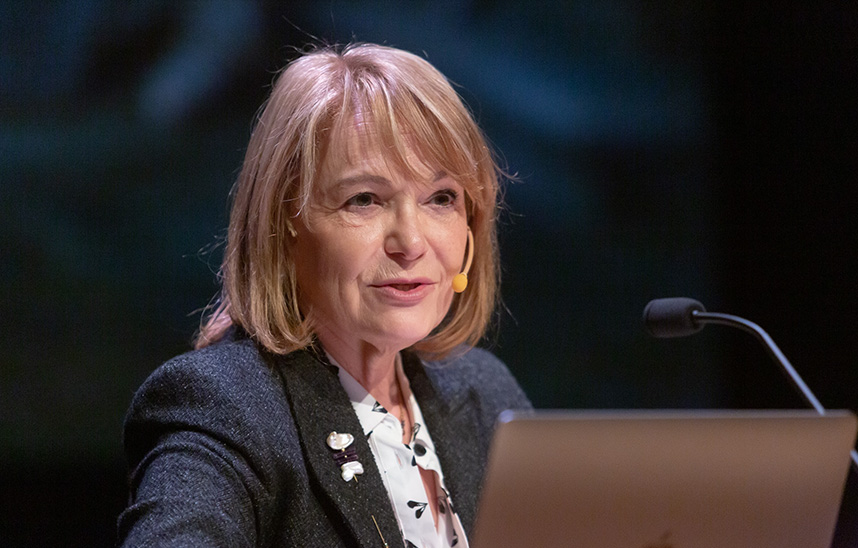Rubens' religious painting conveys that "eloquence and words are the best way to live religion".
Palma Martínez-Burgos, Professor of Art History, gives the second lecture of the Friends of the Prado Museum Foundation at the University of Navarra.

PhotoManuelCastells/
The auditorium of the Museo Universidad de Navarra was full for the second Wednesday in a row at the framework of the lecture series Francisco Calvo Serraller that the Fundación Amigos del Museo del Prado organizes at partnership with the School of Philosophy y Letras. The audience attended the session given by Palma Martínez-Burgos, professor of Art History at the University of Castilla La Mancha, with a common interest: the Flemish painter Pedro Pablo Rubens and, specifically, his religious paintings.
At lecture, entitled "Rubens. Religious Painting as Sacred Conversation," the expert shed new light on the artist. She showed how he reinvented scenes from the Bible, keeping in mind the transmission of a specific virtue: rhetoric. For the Flemish painter, behind religious stories lies the importance of conversation.
According to Martínez-Burgos, Rubens "does not seek visual impact so much as interior reflection". His religious art is indeed propagandistic and theatrical, but it also carries a reflective undertone. When "Christ submission the keys to St. Peter" (1614), or "Christ orders St. Peter" (1614), the characters converse with their gazes, the positions of their arms, the movements perceived in their hands. During "The Last Supper" (1630-1631), the figures sit around a square table instead of a rectangular one. Thus, the painter alludes to a conversation with the diagonal between Jesus and Judas. The speaker describes "Christ and the adulterous woman" (1610-1615) as "pure eloquence". All the works have in common that, beyond the scene depicted, Rubens creates games with the diagonals, the lights, the very appearance of the characters and their positions. In this way, he makes his works speak with "a narrative temperament".
As explained by speaker, when Rubens rescues these images he pays homage to his years in Italy. The artist's classical and humanistic training had a great influence on his way of seeing and painting religion, but also on his link with rhetoric. He studied the classics, read Cicero and was therefore fully aware of the power of the word. That element was at the center of his biblical representations, as the speaker described that among his characters, "there is a current of enormous closeness. They all share the message that words are the best instrument for convincing".
Nevertheless, Martínez-Burgos defined Rubens as a cosmopolitan man and a Flemish orthodox. Despite his Italian inspiration, the artist read texts forbidden by Rome, so he did not quite fit into that doctrine. Religious art was his way of merging these two worlds. To achieve the peaceful implantation of Catholic doctrine in the Flemish territories, he used his art and biblical images in a metaphorical way, thus renewing iconography.
At the doors of his magnificent mansion in Antwerp, Rubens placed two statues: that of Minerva, goddess of wisdom, and that of Mercury, insignia of eloquence. The professor concluded by defining these two principles as fundamental guides of the Flemish painter's religious production. Rubens' biblical painting acts as "a message of peace with which the artist not only establishes the instructions of his religious conception, but also of his modus vivendi".
